1. Built-In Desks in Every Room
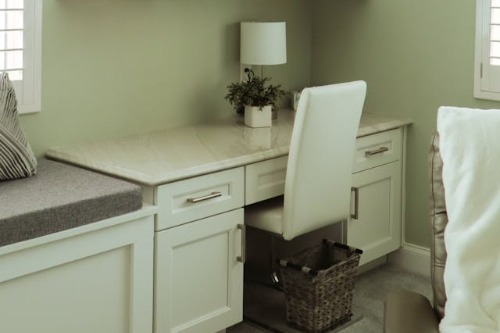
Designers love to add built-in desks, especially in bedrooms and bonus rooms, thinking they’ll become home office havens. But in reality, most people are either working at the kitchen island or using a laptop on the couch. The pandemic may have sparked the home office trend, but now that remote work is more casual, these desks often go unused. Worse, they can become clutter magnets rather than productivity stations.
The problem is that built-ins are permanent, and people’s routines are anything but. Flexibility matters more than ever, and a movable desk or standing table offers far more versatility. Plus, not everyone needs multiple workstations throughout the house. It’s a case of good intention, bad execution.
2. Wine Fridges and Wet Bars
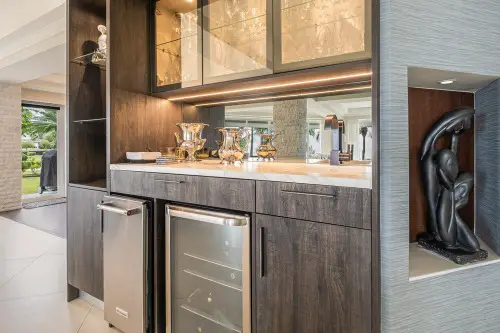
A wine fridge might seem luxurious, but many homeowners admit they barely use them. Unless you’re a serious collector, keeping wine at a specific temperature isn’t a daily concern. Wet bars take up space and require plumbing, but most entertaining happens in the kitchen or living room anyway. These features tend to feel more like showpieces than functional spaces.
Ironically, they can even be seen as outdated—relics from a time when hosting was more formal. In today’s casual lifestyle, a bar cart or small beverage center often makes more sense. Maintenance and repairs also tend to be overlooked until it’s too late. Designers keep adding them for “resale value,” but many owners would rather have more pantry space.
3. Formal Dining Rooms
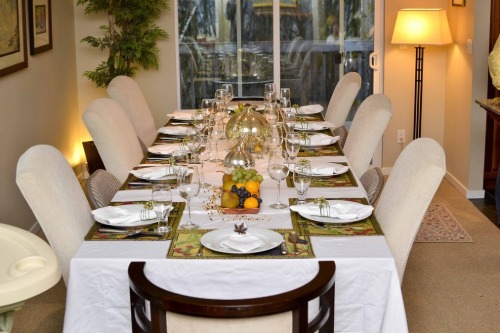
The formal dining room has become the land of lost potential in many homes. It sits untouched, maybe dressed up for Thanksgiving, but otherwise just gathers dust. In reality, most meals happen around the kitchen island or in the breakfast nook. People crave informal spaces where they can multitask—eat, work, chat—all in one place.
Still, builders keep sectioning off square footage for these dining zones. It’s partly tradition, partly assumption about buyer expectations. But in most modern households, a dedicated formal dining space feels like a waste. Many are converting them into libraries, playrooms, or even workout areas instead.
4. Spa Tubs in the Primary Bathroom
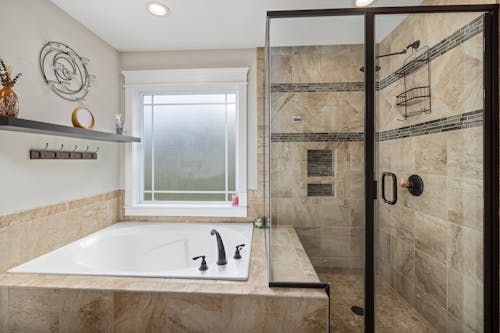
Those big jetted bathtubs look amazing in real estate photos, but they rarely get used. Many homeowners admit they prefer quick showers and find it too time-consuming to fill a large tub. Add in the water usage, cleaning hassle, and noise of jets, and the appeal fades fast. In fact, spa tubs can become glorified laundry baskets or pet-washing stations.
Designers keep installing them assuming they add luxury, but it’s a misread of lifestyle habits. What’s actually trending is oversized showers with seating, multiple heads, and steam options. These offer relaxation and practicality without the maintenance burden. So while tubs may sell the dream, showers deliver the reality.
5. Outdoor Kitchens with Full Appliances
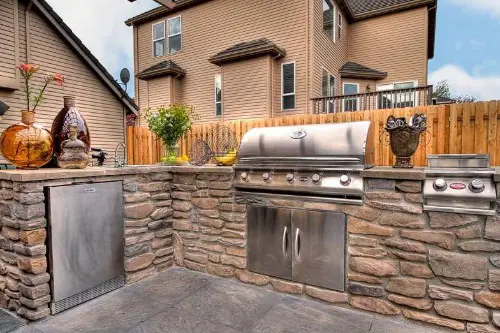
The dream of hosting summer cookouts with a full outdoor kitchen—grill, fridge, sink, even a pizza oven—is incredibly seductive. But unless you live in a year-round warm climate, it’s not exactly practical. Many outdoor kitchens go unused most of the year and require upkeep, protection from weather, and winterizing. That adds cost without much return.
Plus, many people still prefer cooking inside and just bringing the food out. It’s easier, faster, and less of a hassle. When the novelty wears off, those fancy outdoor setups often sit idle. Sometimes a simple grill and a patio table are all anyone really wants.
6. Smart Mirrors
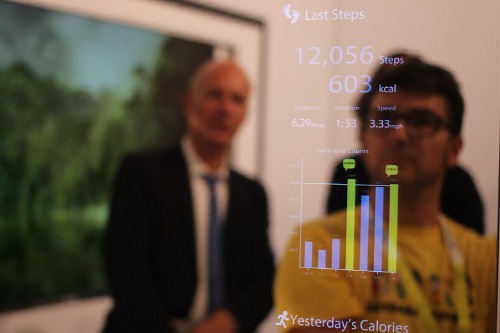
Smart mirrors with touchscreens, fitness programs, and built-in speakers sound futuristic—but most people just want to brush their teeth in peace. While cool in concept, they’re rarely essential and tend to be more of a tech flex than a daily-use item. Setup and connectivity issues often frustrate users, and they require frequent updates to stay functional. The result is an expensive mirror that often ends up used like any other.
Designers are adding them especially in high-end bathrooms and home gyms, hoping to create a luxury tech vibe. But unless you’re truly committed to digital wellness routines, they can feel more gimmicky than helpful. People often revert to using their phones or tablets for workouts anyway. As with many smart gadgets, the promise exceeds the practice.
7. Central Vacuum Systems
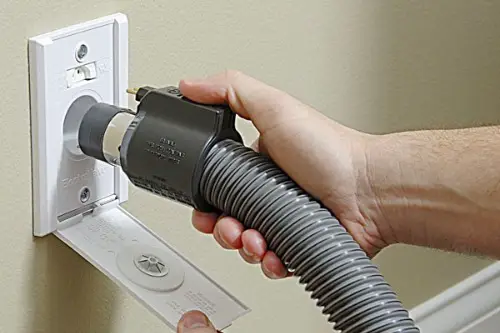
This was supposed to be the end-all of convenient cleaning: plug the hose into a wall port, and voila! But central vac systems are pricey, clunky to use, and haven’t kept up with cordless vacuum technology. Today’s lightweight stick vacuums are more popular because they’re portable, easy to charge, and don’t require installation. So those wall ports mostly go ignored.
Designers still add them in some new builds, especially in upscale homes. It’s an outdated attempt at modernization, and most buyers don’t request them. The upfront cost doesn’t justify the benefit, especially when maintenance is factored in. In truth, it’s more about nostalgia than necessity.
8. Sunken Living Rooms
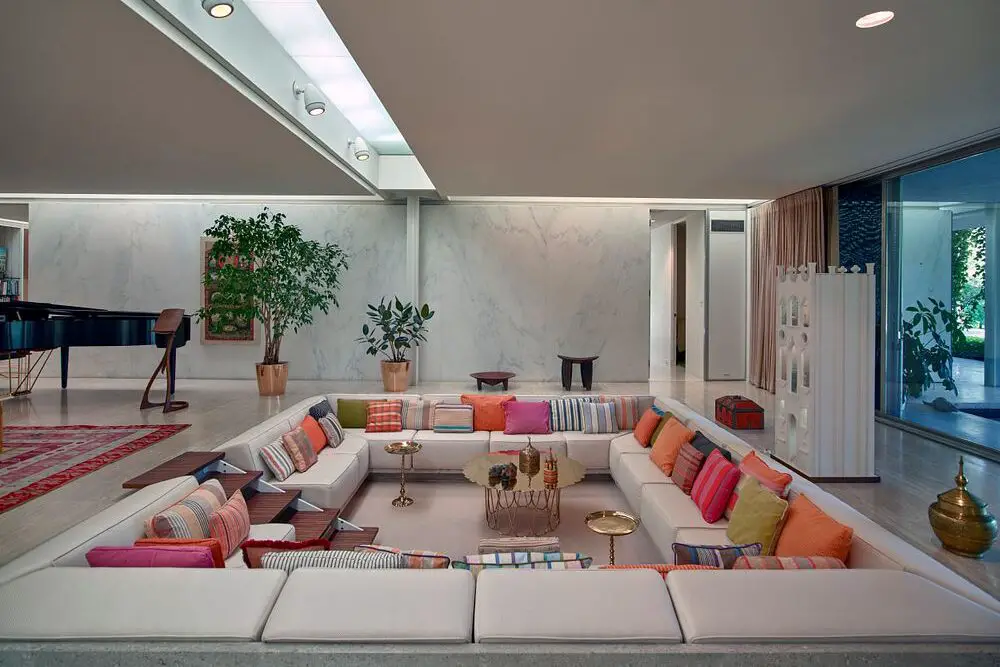
They scream mid-century cool, and yes, they look great on Pinterest—but sunken living rooms have become a hazard and hassle. Designers add them for visual interest, but the novelty wears off fast when people start tripping on the step down. They’re hard to furnish and can be an accessibility issue for families with kids or older adults. Cleaning them is also a pain because dust tends to settle in the lower zone.
Many homeowners end up filling them in entirely. It’s another case of form over function, where aesthetic ambition clashes with everyday use. They also complicate renovations and flooring transitions. Still, they pop up in new builds trying to channel retro-modern charm.
9. Charging Stations in the Mudroom
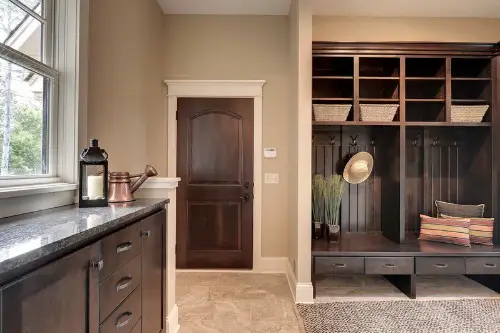
With so many devices in every household, the idea of a designated charging station sounds genius. But people are creatures of habit—they still charge their phones on the nightstand, kitchen counter, or even the bathroom sink. So those neatly labeled cubbies and USB outlets in the mudroom often go unused. They look good on a tour but rarely become part of daily life.
Designers keep adding them assuming they’ll help corral device clutter. But because they’re tucked away near the garage or back door, they’re often forgotten. A simple multi-port charger in the living room tends to see more action. Sometimes, practicality beats planning.
This post Designers Keep Adding These 9 Features—But No One Is Using Them was first published on Greenhouse Black.
